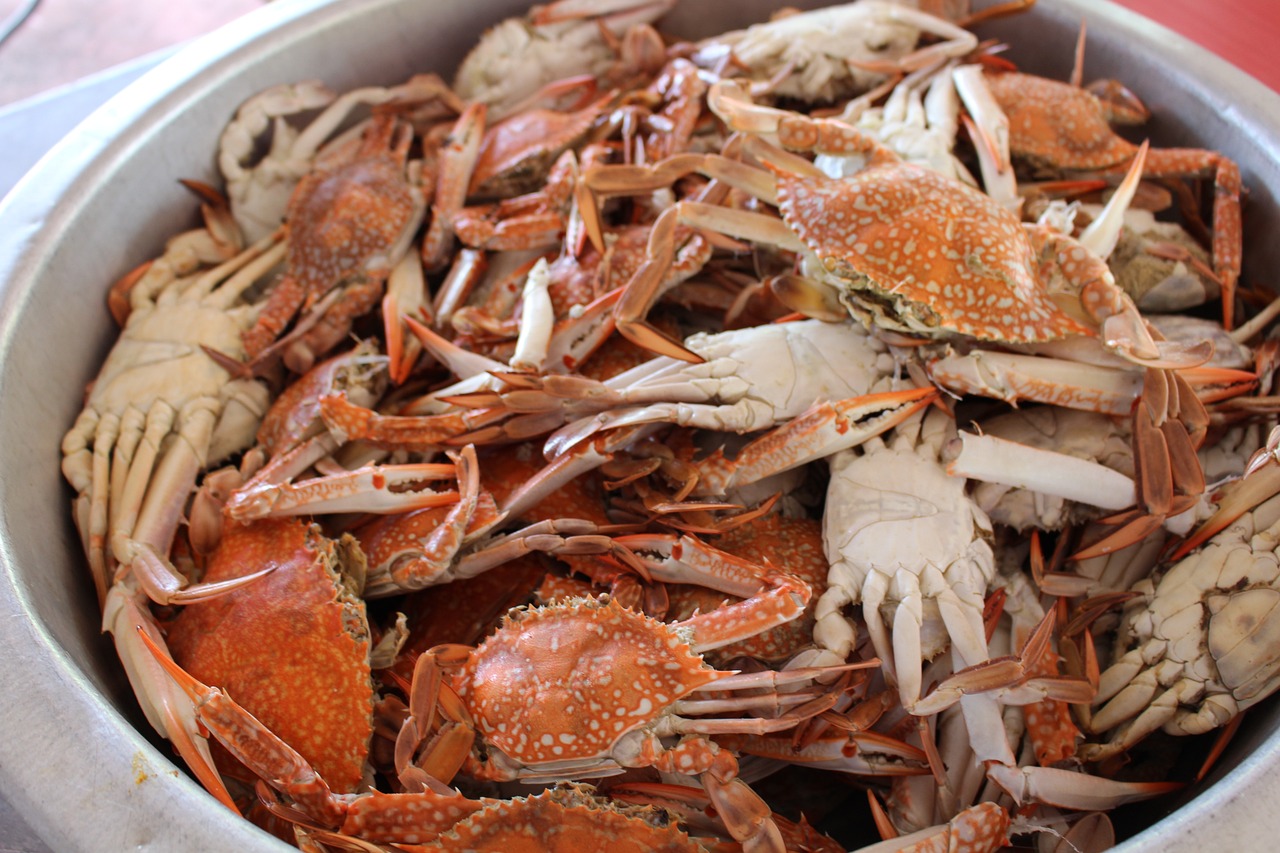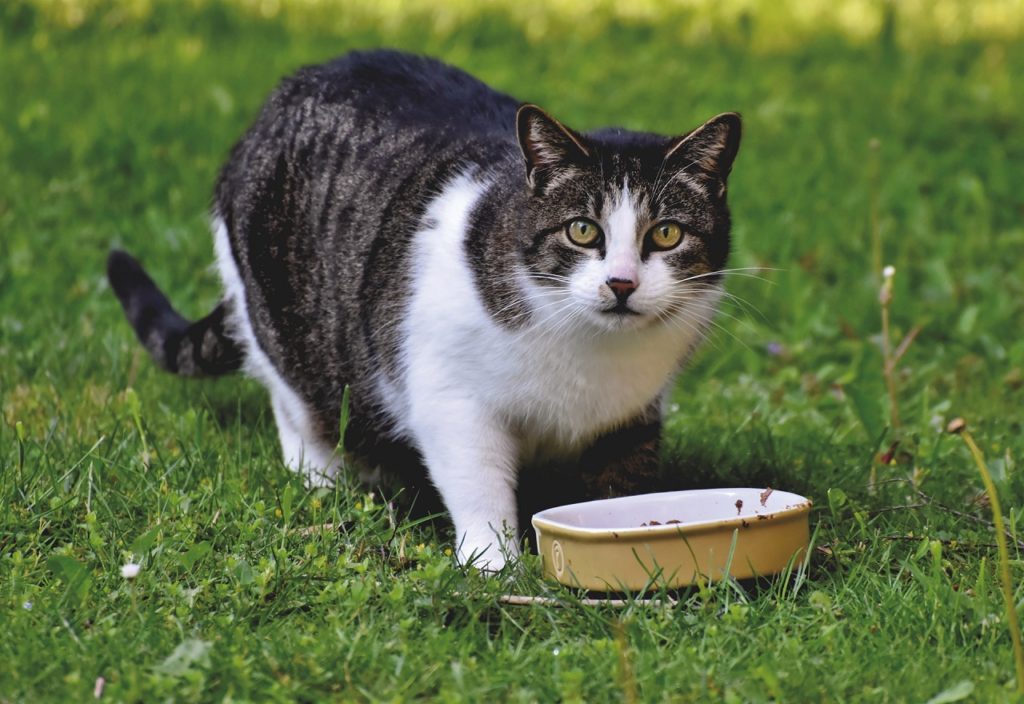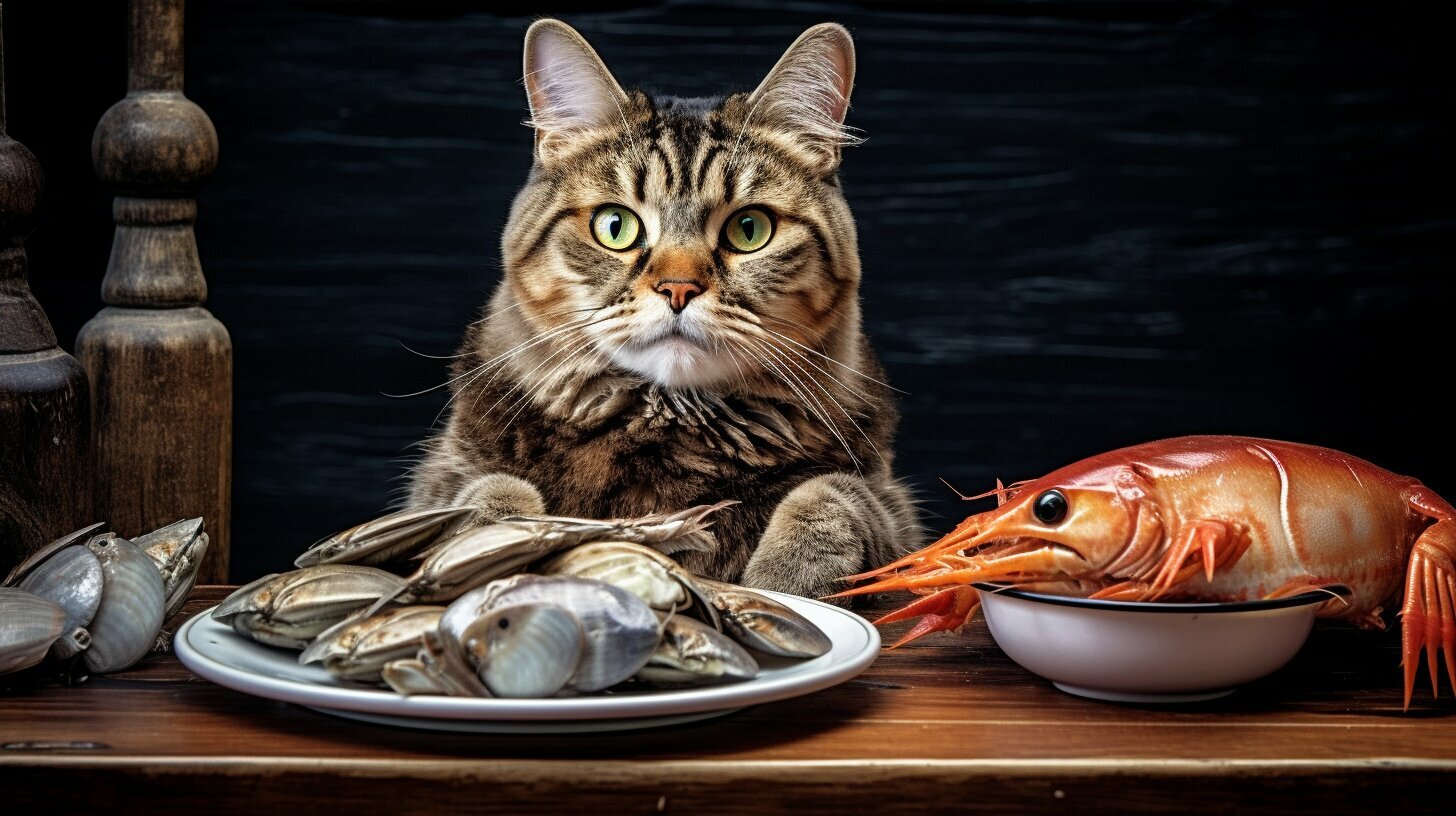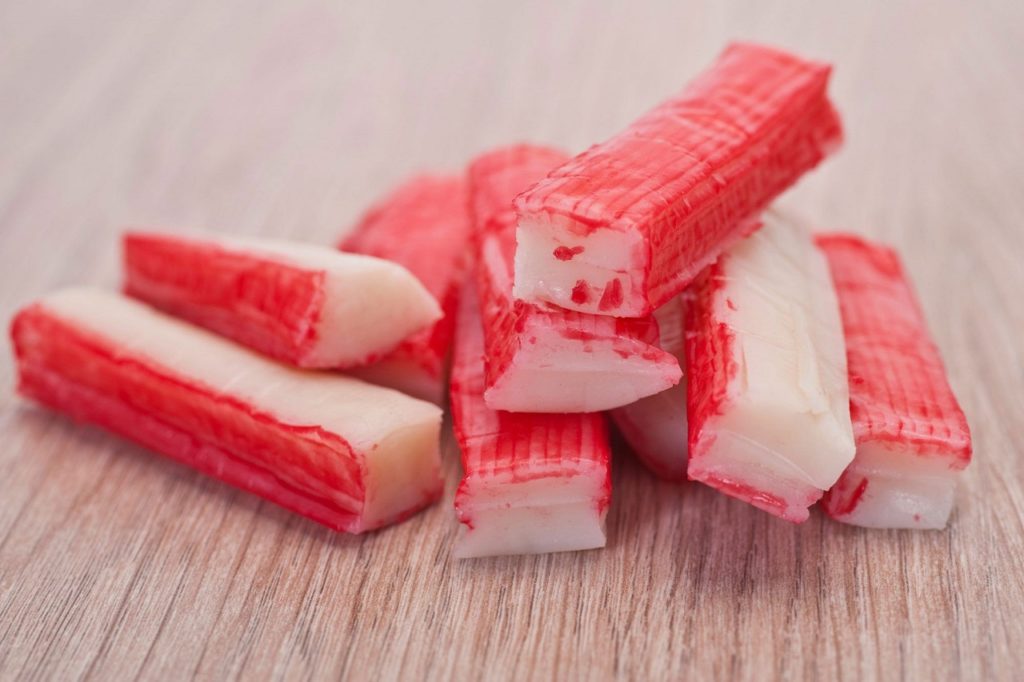Are you a cat lover who also enjoys seafood? If so, you may be wondering whether cats can eat crab. As a responsible pet owner, it’s important to choose safe and healthy foods for your furry friend, including seafood.
In this article, we’ll explore the topic of cats and crab, discussing whether it’s safe for your feline friend to indulge in this delicious crustacean. We’ll also cover the nutritional needs of cats and the benefits and risks of feeding them different types of seafood.
Whether you’re a new cat owner or a seasoned pro, we hope this guide will help you make informed choices about what to feed your pet. So, can cats eat crab? Let’s find out!
Understanding Cats’ Nutritional Needs
Cats have specific nutritional needs to maintain their health and well-being. As obligate carnivores, they require a diet high in protein from animal sources, which provides them with the necessary amino acids and other essential nutrients.
In addition to protein, cats require a balance of fats, carbohydrates, vitamins, and minerals in their diet. Deficiencies in any of these nutrients can lead to health problems over time.
It’s important to choose a high-quality commercial cat food that meets these nutritional requirements. Homemade diets can be challenging to balance correctly and can lead to nutrient deficiencies if not properly formulated.
Consult with a veterinarian or a veterinary nutritionist to ensure that your cat’s diet is meeting their specific needs. Factors such as age, weight, and health status can impact their requirements.
Seafood for Cats: Pros and Cons
Seafood can be a tasty and nutritious addition to your cat’s diet, but it’s important to be aware of the potential benefits and risks before feeding it to your feline friend. Let’s take a closer look at the pros and cons of feeding your cat seafood, including crab.
| Pros | Cons |
|---|---|
|
|
When it comes to feeding your cat seafood, it’s important to choose safe and healthy options. Look for high-quality, fresh seafood that has been properly handled and prepared. Always cook seafood thoroughly to eliminate the risk of harmful bacteria or parasites.
In addition, pay attention to your cat’s individual needs and preferences. Some cats may enjoy seafood, while others may not be particularly interested. If you decide to introduce seafood to your cat’s diet, start with small amounts and monitor for any signs of digestive upset or allergic reactions.
Tip: Always consult with your veterinarian before making any major changes to your cat’s diet, including the addition of seafood.
Can Cats Eat Shellfish and Crustaceans?
Shellfish and crustaceans are popular seafood options for humans, but can they be safely consumed by cats? Let’s take a closer look at some common types and whether they are a good choice for your feline friend.
| Shellfish/Crustacean | Can Cats Eat It? | Potential Benefits | Potential Risks |
|---|---|---|---|
| Shrimp | Yes | High in protein and low in fat. Contains antioxidants and omega-3 fatty acids. | Can be high in cholesterol. Avoid feeding raw or uncooked due to risk of bacterial contamination. |
| Lobster | Yes, in moderation | High in protein and low in fat. Contains minerals like zinc and selenium. | Can be high in cholesterol. Avoid feeding the shell or claws, which could cause intestinal blockages. |
| Crab | Yes, in moderation | High in protein, vitamins, and minerals like zinc and selenium. Can promote healthy skin and coat. | Avoid feeding raw or uncooked due to risk of bacterial contamination. Can be high in cholesterol. |
| Clams | Yes, in moderation | High in protein and low in fat. Contains vitamins and minerals like iron and potassium. | Can be high in sodium. Avoid feeding raw or uncooked due to risk of bacterial contamination. |
| Oysters | Yes, in moderation | High in protein and low in fat. Contains minerals like iron and zinc, as well as vitamin B12. | Can be high in sodium. Avoid feeding raw or uncooked due to risk of bacterial contamination. |
While shellfish and crustaceans can offer nutritional benefits for cats, it’s important to feed them in moderation and cooked thoroughly to reduce the risk of bacterial contamination. Always avoid feeding the shell or claws, as they can cause intestinal blockages. Consult with your veterinarian before introducing any new foods to your cat’s diet to ensure their safety and well-being.
Cooked vs. Raw Crab: Which is Better for Cats?
When it comes to feeding cats seafood, including crab, one question that often arises is whether it is better to serve it cooked or raw. While both options have their advantages and disadvantages, there are some key factors to consider when it comes to your cat’s health and nutrition.
Cooked Crab
Cooking crab is one way to eliminate the risk of harmful bacteria and parasites that can be present in raw seafood. This is especially important for cats, who may have weaker immune systems than humans and are more susceptible to foodborne illnesses.
In addition to being safer to eat, cooked crab can also be more palatable for some cats. The heat from cooking can enhance the flavor and aroma of the meat, making it more enticing for cats who may be hesitant to try new foods.
Raw Crab
While some cat owners may be tempted to feed their pets raw crab, it is important to understand the potential risks associated with this practice. Raw seafood, including crab, can contain harmful bacteria and parasites that can cause illness or even death in some cases.
Additionally, raw crab may not be as nutritionally beneficial for cats as cooked crab. Cooking can help break down the proteins in the meat, making them easier for cats to digest and absorb. Raw crab may also contain higher levels of harmful contaminants, such as heavy metals or chemical pollutants, which can build up in the body over time.
Conclusion
While cats can technically eat both cooked and raw crab, it is generally safer and more nutritious to serve it cooked. Whether you choose to boil, steam, or bake your crab, make sure it is fully cooked before feeding it to your cat. By following these guidelines, you can help ensure that your feline friend stays healthy and happy while enjoying their seafood treats.
Imitation Crab and Cats: What You Need to Know
If you’re considering feeding your cat imitation crab, it’s important to understand what it is and whether it’s safe for your feline friend. Imitation crab, also known as surimi, is a processed seafood product made from various types of whitefish that have been ground into a paste and flavored to taste like crab.
While imitation crab may be a more affordable and convenient option than real crab meat, it’s important to note that it often contains a variety of additives, such as sugar, salt, and artificial flavorings, that may not be beneficial for cats’ health.
Can cats eat imitation crab? While small amounts of imitation crab meat are generally considered safe for cats to eat, it should not be a regular part of their diet. Additionally, it’s important to check the ingredient list and avoid any products that contain ingredients that are harmful to cats, such as onions or garlic.
It’s also important to note that the nutritional content of imitation crab meat may not be as high as real crab meat. While real crab is a good source of protein, vitamins, and minerals that are beneficial for cats, imitation crab meat may not provide the same nutritional value.
Tip: If you do choose to feed your cat imitation crab, be sure to do so in moderation and as part of a balanced diet that includes other sources of protein and nutrients.
Canned Crab Meat and Cats: What You Need to Know
Canned crab meat is a convenient and affordable option for pet owners who want to include seafood in their cat’s diet. However, not all canned crab meat is created equal. It’s important to choose high-quality products that are safe and nutritious for your furry friend.
When shopping for canned crab meat for your cat, look for options that are made from high-quality, human-grade ingredients. Check the label carefully to ensure that the product is free from additives, preservatives, and other harmful ingredients that can harm your pet’s health.
| Pros | Cons |
|---|---|
| – Convenient and affordable | – Some products may contain harmful additives |
| – Can be a good source of protein and other essential nutrients | – Some cats may not like the taste or texture of canned crab meat |
| – Easy to store and use | – Some products may contain high levels of sodium or other unhealthy ingredients |
While canned crab meat can be a healthy and nutritious addition to your cat’s diet, it should not be the only source of seafood in their diet. It’s important to vary your pet’s diet and include other seafood options like fresh fish and shrimp, as well as other sources of protein like chicken and beef.
Always introduce new foods gradually and monitor your cat’s reaction closely. If you notice any signs of digestive upset or food allergies, stop feeding them the new food immediately and consult with your veterinarian.
Crab Cakes and Cats: Are They Safe to Eat?
If you’re a fan of crab cakes, you may be wondering whether your feline friend can enjoy them too. While crab can be a healthy and tasty addition to a cat’s diet, it’s important to consider a few key factors before feeding them crab cakes.
The Risks of Feeding Your Cat Crab Cakes
One of the main concerns when it comes to feeding cats crab cakes is the potential for added ingredients that may be harmful to your cat’s health. Many crab cake recipes include ingredients like onions, garlic, and other spices that can be toxic to cats.
Another potential risk is the high fat and calorie content of crab cakes. While cats require a certain amount of fat in their diet, excessive amounts can lead to obesity and other health issues.
Choosing Safe Crab Cake Options for Your Cat
If you want to treat your cat to a taste of crab, there are a few safe options to consider. Look for high-quality canned crab meat that doesn’t contain any added ingredients that could be harmful to your cat. You can also prepare your own crab cakes at home using simple, cat-friendly ingredients like plain crab meat and whole grains.
It’s also important to keep portion sizes in mind when feeding your cat crab or any type of seafood. While a small amount of crab can be a healthy addition to your cat’s diet, too much can cause digestive upset and other health issues.
Conclusion
While crab cakes can be a tasty treat for cats, it’s important to choose safe and healthy options that don’t contain any harmful ingredients. When in doubt, stick to plain crab meat or other types of seafood that are known to be safe for cats.
Artificial Crab and Cats: Is It a Safe Choice?
If you’re considering feeding your cat artificial crab, it’s important to know what you’re giving them. Artificial crab, also known as surimi, is a processed seafood product made from white fish meat that has been flavored and shaped to resemble crab meat. While it may be a lower-cost and more accessible option than real crab meat, there are some important considerations to keep in mind.
Is artificial crab safe for cats to eat?
While not inherently toxic to cats, artificial crab does not provide the same nutritional benefits as real crab meat. It is typically high in sodium and other additives, which can be harmful to your cat’s health if consumed in large quantities. Additionally, the processing methods used to create artificial crab may introduce harmful chemicals and contaminants.
What are the potential risks of feeding cats artificial crab?
Feeding your cat large quantities of artificial crab can lead to health problems such as obesity, hypertension, and kidney disease. Additionally, the additives used in artificial crab may cause digestive issues, including vomiting and diarrhea. There is also the risk of your cat developing an allergy to the additives or preservatives used in the product.
Choosing a Safer Seafood Option
If you want to include seafood in your cat’s diet, there are safer options to consider. Real crab meat, for example, is a nutrient-rich source of protein and beneficial vitamins and minerals. Canned crab meat can also be a good option, provided that it is free from preservatives and excess sodium. Always check with your vet to ensure that seafood is an appropriate addition to your cat’s diet.
Overall, while artificial crab may be a tempting option, it’s important to consider the potential risks to your cat’s health. Opting for more natural and nutritious seafood choices can help keep your cat healthy and happy.
Cooked Snow Crab and Cats: What You Need to Know
If you’re considering feeding your cat some cooked snow crab, you’re likely wondering whether it’s safe for them to eat. The good news is that cooked snow crab meat can be a healthy and nutritious addition to your cat’s diet.
| Benefits of Cooked Snow Crab for Cats | Potential Risks of Cooked Snow Crab for Cats |
|---|---|
|
|
If you’re feeding your cat cooked snow crab, be sure to remove any shells or cartilage to prevent choking hazards. It’s also a good idea to introduce new foods slowly and in small amounts to avoid upset stomachs or other digestive issues.
Processed Crab and Cats: What You Need to Know
Processed crab meat, also known as surimi, is a popular ingredient in many seafood products, including imitation crab meat. However, it is important to consider the potential risks and benefits of feeding processed crab to your cat.
Surimi is made by pulverizing white fish meat and combining it with various additives and flavorings to mimic the taste and texture of crab meat. While this type of seafood product may be high in protein and low in fat, it may also contain artificial preservatives, colors, and flavors that can be harmful to your cat’s health.
If you choose to feed your cat processed crab meat, be sure to read the label carefully to ensure that it does not contain any harmful additives or preservatives. Look for products that are made with all-natural ingredients and avoid those with added sugar or sodium.
As with any new food, it is important to introduce processed crab to your cat slowly and in small amounts, monitoring for any signs of digestive upset or allergic reaction. If your cat experiences vomiting, diarrhea, or other symptoms after eating processed crab, discontinue feeding it and consult with your veterinarian.
Crab Rangoon and Cats: Are They Safe to Eat?
Cat owners may be wondering whether they can share their crab rangoon or crab puff appetizers with their feline friends. While crab meat itself is safe for cats in moderation, crab rangoon and other types of crab-filled appetizers may not be the best choice.
These types of foods are often high in fat and salt, which can be harmful to cats in excess. Additionally, the crispy outer shell of crab rangoon may be difficult for cats to digest and could potentially cause digestive issues or blockages.
While small amounts of crab meat in a homemade treat may be a safe way to introduce your cat to seafood, it’s generally best to avoid giving your cat crab rangoon or other similar appetizers. Instead, opt for high-quality, cat-specific seafood treats or fresh seafood such as cooked or canned crab meat in moderation.
Can Cats Eat Crab Shells?
It is not recommended to feed your cat crab shells. While some cats may enjoy chewing on them, crab shells are not digestible for cats and can pose a choking hazard. Additionally, the sharp edges of the shells can cause injury to your cat’s mouth, throat, and digestive system.
If your cat accidentally ingests a small piece of crab shell, they will likely be able to pass it without any issues. However, if you suspect that your cat has ingested a larger piece of shell or is showing signs of discomfort, such as vomiting or diarrhea, it is important to seek veterinary care immediately.
It is important to always supervise your cat when feeding them any type of seafood, and to remove any shells or bones before offering it to them.
Can Cats Eat Crab Sticks?
Crab sticks, also known as imitation crab meat, are a popular seafood product made from fish meat. While they may be labeled as crab sticks, they typically contain little to no actual crab meat. So, are they safe for cats to eat?
It’s generally considered safe for cats to have small amounts of cooked fish as a part of their balanced diet. However, it’s important to note that crab sticks may contain added ingredients such as salt, sugar, and artificial flavors, which can be unhealthy for cats.
If you choose to offer crab sticks to your cat, be sure to read the label carefully and avoid any products that contain potentially harmful ingredients. As with any new food, it’s also a good idea to introduce crab sticks gradually and in small portions to monitor your cat’s reaction.
Do Cats Like Crab?
Many cats enjoy the taste of seafood, including crab. However, just like humans, every cat is unique and may have different food preferences. Some cats may be more cautious about trying new foods, while others may eagerly devour anything put in front of them.
If you are introducing crab to your cat for the first time, it is important to start with a small amount and monitor their behavior for any signs of discomfort or allergies. Symptoms of an allergic reaction in cats can include vomiting, diarrhea, and difficulty breathing.
It is also important to remember that while cats may enjoy the taste of crab, it should not make up a large portion of their diet. Cats require a balanced and nutritious diet to maintain optimal health and well-being. This includes a variety of protein sources, as well as essential vitamins and minerals.
If you are unsure about feeding your cat crab or any other type of seafood, consult with your veterinarian for personalized advice and guidance.
FAQ: Common Questions About Cats and Crab
As a cat owner, you may have questions about whether crab is safe for your furry friend to eat. Here are some common questions and answers to help guide your decision.
Can cats eat crab?
Yes, cats can eat crab, but it should be offered in moderation as an occasional treat rather than a regular part of their diet. It’s important to choose safe and healthy seafood options for your feline friend.
Is crab safe for cats?
Crab can be safe for cats, but it’s important to be aware of the potential risks, such as contamination and allergies. Cooked crab is generally safer than raw crab, and it’s important to avoid giving cats crab shells or other parts that could be choking hazards.
Can cats eat other types of seafood?
Cats can eat certain types of seafood, but it’s important to do so in moderation and choose safe options. Fish such as salmon and tuna are often recommended for cats, but it’s important to avoid fish that are high in mercury and other toxins.
What nutritional needs do cats have?
Cats require a balanced and nutritious diet that includes protein, fat, and carbohydrates. They also need specific nutrients such as taurine, which is found in meat, to maintain optimal health and wellbeing.
How do I introduce seafood to my cat?
When introducing seafood to your cat, start with a small portion and watch for any signs of an allergic reaction or digestive upset. Gradually increase the amount of seafood offered over time if your cat tolerates it well.
Where can I find more information and support?
If you have further questions or concerns about feeding seafood to your cat, consult with your veterinarian. They can provide personalized advice and recommendations based on your cat’s specific needs and health history.




